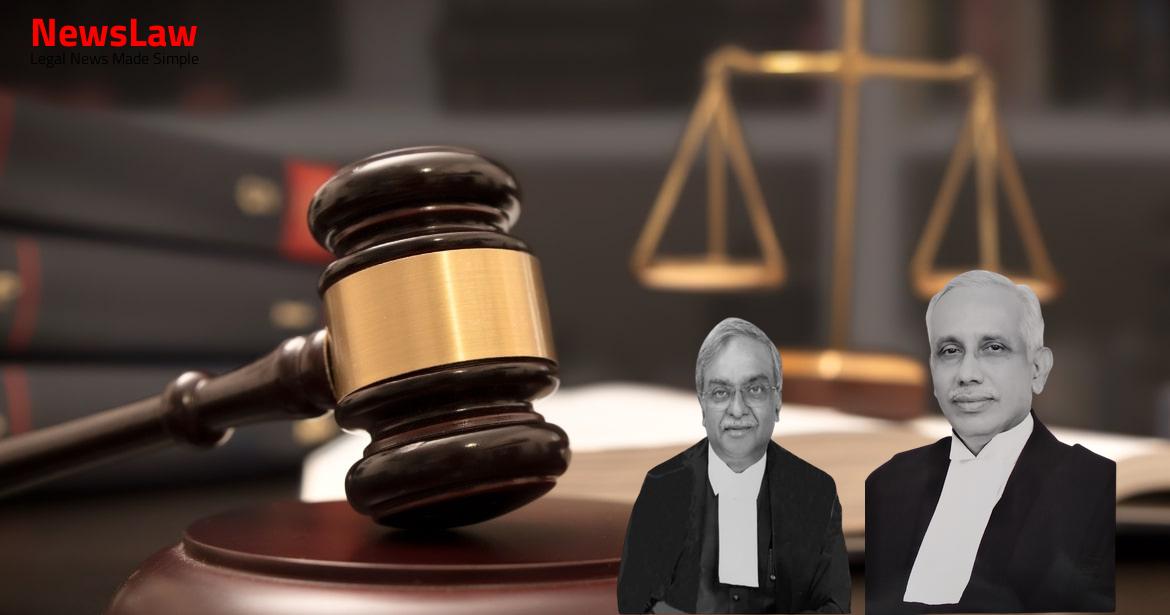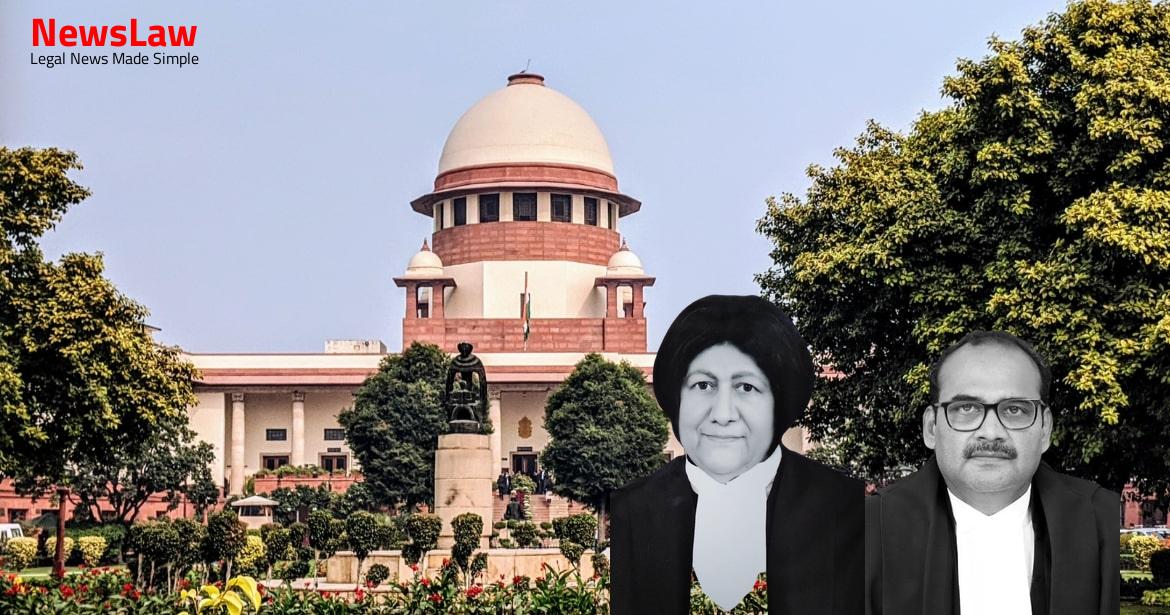An overview of the proceedings arising from the abolition of the Madhya Pradesh Administrative Tribunal and the Tamil Nadu Administrative Tribunal 19 a. Section 21 of the General Clauses Act is otherwise applicable to the Administrative Tribunals Act. The notification dated 2 August 2019 is valid despite not being expressed in the name of the President of India. The notification dated 2 August 2019 is valid despite not being expressed in the name of the President of India. Article 323A empowers Parliament to provide for the adjudication of certain disputes by administrative tribunals. Section 4(1) of the Administrative Tribunals Act provides that the Central Government shall establish an administrative tribunal known as the “Central Administrative Tribunal” to adjudicate disputes concerning the recruitment and conditions of service of persons in connection with posts under the Union or All-India Service, including disputes with respect to remuneration, pension, tenure, leave, and disciplinary matters. In terms of Section 4(2) of the Administrative Tribunals Act, the Central Government may establish an administrative tribunal for a particular state, upon receiving a request in this regard from the concerned State Government. Following the enactment of the Administrative Tribunals Act, various states including Andhra Pradesh, Himachal Pradesh, Karnataka, Madhya Pradesh, and Maharashtra requested the Central Government to establish an SAT, and the Central Government issued notifications establishing them.
Clause 2(d) of Article 323-A and clause 3(d) of Article 323-B were unconstitutional to the extent that they excluded the jurisdiction of the High Courts under Articles 226 and 227 and of the Supreme Court under Article 32 of the Constitution; b. The jurisdiction conferred upon the High Courts under Articles 226 and 227 and upon the Supreme Court under Article 32 of the Constitution form a part of the basic structure of the Constitution; and d. On 12 January 2016, the Union Government requested the State of Odisha to provide information about the Orissa High Court’s views on the proposal to abolish the OAT, the legal mechanism by which the cases pending before the OAT could be transferred to the Orissa High Court, and regarding the plan of action with respect to the employees of the OAT. By a letter dated 5 February 2019 to the Union Government and the State of Odisha, the Orissa High Court conveyed that that it had resolved to accept the decision to abolish the OAT and the attendant proposals regarding the PART A 10 transfer of employees and pending cases. In 2019, each of the appellants filed a Writ Petition before the Orissa High Court for quashing the notification dated 2 August 2019 (as well as the decision of the Cabinet of the State Government dated 9 September 2015 to abolish the OAT). The proposition that what cannot be done directly cannot be done indirectly is not applicable because neither Article 323-A of the Constitution nor Section 4(2) of the Administrative Tribunals Act prohibits the Union or State Government from abolishing an SAT; e. The High Court also observed that the procedure adopted by the Union Government may have been rendered arbitrary if it had failed to ensure that the High Court was consulted prior to abolishing the OAT because such a decision would directly impact the functioning of the High Court. The Administrative Tribunals Act does not vest either the Union Government or the State Government with the power to abolish SATs. The State Government is trying to take advantage of its own wrong by failing to fill the vacancies in the OAT and creating the conditions for the abolition of the OAT. Section 4(2) of the Administrative Tribunals Act enables the Union Government to establish an SAT upon receiving a request in this behalf from the State Government. The fundamental right to justice has not been violated because the cases pending before the OAT were transferred to the Orissa High Court; 17. The State Government took a policy decision to abolish the OAT, in light of the low rate of disposal of cases by the OAT. The principles of natural justice were not violated; PART C 17 The abolition of the OAT does not make the court system less accessible to litigants because they would have been required to travel to Cuttack in any event in order to participate in the writ proceedings before the Orissa High Court. Whether the Writ Petitions instituted by the appellants before the Orissa High Court were maintainable; b. Whether Article 323-A of the Constitution makes it mandatory for the Union Government to establish SATs; c.
Whether the Union and State Governments have violated the principles of natural justice by failing to provide the OAT Bar Association and the litigants before the OAT with an opportunity to be heard before arriving at a decision to abolish the OAT; g. Section 74(1)(ii) of this legislation vested the State Governments of these two states with the power to abolish “ every PART D 20 Commission, Authority, Tribunal, University, Board or any other body constituted under a Central Act, State Act or Provincial Act and having jurisdiction over the existing State of Madhya Pradesh. Rather, it was required to request the Union Government to issue a notification abolishing the MPAT because the MPAT was established by the Union Government.
As seen from a discussion of the facts, the MPAT Abolition Case (supra) concerned the powers of the State of Madhya Pradesh under the Madhya Pradesh Reorganization Act 2000 as well as the constitutional validity of certain provisions of that enactment. A similar issue is before us in the present case and this aspect of the decision in the MPAT Abolition Case (supra) may be instructive. On this basis, it directed the Union Government to issue a notification abolishing the TNAT “ as there is no necessity for the Central Government to wait for the amendment before the Parliament and the mere issuance of Notification would suffice for abolition of the Tribunal.” Two appeals against the decision in the TNAT Abolition Case (supra) were preferred before this Court. The proceedings arising from the TNAT Abolition Case (supra) in appeal before this Court, too, do not have a bearing on the approach to be adopted while deciding the merits of the issues before us because the question of law was expressly kept open. Special Tribunal (2002)
PART D 24 1 SCC 33, the existence of a legal right of the petitioner which is alleged to have been violated is the foundation for invoking the jurisdiction of the High Court under Article 226: 30. The OAT Bar Association joined the Odisha Retired Police Officers’ Welfare Association in alleging that the state’s action of abolishing the OAT violated its right under Article 14 of the Constitution. (1977) 2 SCC 166, this Court expounded on when the word “may” carries with PART D 27 it an obligation to exercise the power conferred by that word in a particular manner: 35. Article 323-A does not specify the conditions in which the power to enact laws providing for the adjudication of certain disputes by administrative tribunals must be exercised. The purpose and the legal and factual context of the power conferred by Article 323-A do not have the effect of narrowing the scope of the discretion afforded to Parliament by the word “may.” The purpose of reducing arrears in the High Courts or securing the speedy disposal of service cases is not of a nature as to cast an obligation upon Parliament to enact laws providing for administrative tribunals.
This, too, indicates that it could not have been the intention of Parliament to mandate the establishment of administrative tribunals as the only remedy to mounting arrears or as the only manner in which speedy justice could be secured. Another important consequence of interpreting Article 323-A as being mandatory is that it prevents Parliament and the State Governments from evaluating the manner in which administrative tribunals function by inter alia accounting for: a. In that case, this Court was required to interpret Section 21 of the Protection of Human Rights Act 1993 which stipulated that State Governments “may” constitute a State Human Rights Commission. We also note that in Dilip K Basu (supra), the fact that victims or complainants would not have access to an efficacious remedy in the absence of State Human Rights Commissions weighed heavily with this Court. The Union Government invoked Section 21 of the General Clauses Act read with Section 4(2) of the Administrative Tribunals Act to rescind the notification establishing the OAT. It is therefore the notification dated 4 July 1986 which established the OAT which must be analysed to determine whether it is a quasi-judicial notification, and not the notification dated 2 August 2019, the PART D 34 effect of which was to abolish the OAT. The decision of an authority is prima facie, and in the absence of any other factor, a quasi-judicial act when there is a lis before it, with two parties with competing claims; b. When the authority has the power to do something which will prejudicially affect the subject, the decision it takes is a quasi-judicial act even in the absence of a lis and two parties with competing claims, when the authority is required by the statute in question to act judicially.
The decision of an authority is quasi-judicial when it is made in accordance with rules. The Union Government may then establish PART D 37 the SAT upon receiving a request, in terms of Section 4(2) of the Administrative Tribunals Act. In that case, Section 21 of the General Clauses Act was found to be inapplicable to the order because it was a quasi-judicial order. Having decided that there is no threshold bar to the applicability of Section 21 of the General Clauses Act, we now consider whether it applies in the present PART D 38 case.
Section 21 of the General Clauses Act can be invoked when its application would not be repugnant to the subject-matter, context, and effect of the statute and when it is in harmony with its scheme and object. Section 29 provides that every suit or proceeding pending before any court or authority immediately before the date of establishment of a tribunal under the Administrative Tribunals Act which would have been within the jurisdiction of the tribunal if the cause of action in such suit or proceeding had arisen after the establishment of the tribunal, stands transferred to the tribunal on the date of its establishment. To the contrary, if the concerned State Government is of the considered view that the SAT is failing PART D 40 to meet the objectives of the Administrative Tribunals Act or that an alternate route for meeting the same objectives is preferable to that of operating an SAT, it is free to act upon its view and request the Union Government to abolish the SAT. There is therefore nothing in the Administrative Tribunals Act which is repugnant to the application of Section 21 of the General Clauses Act. In Avinash Sharma (supra), this Court held that after the Government takes possession of land pursuant to a notification under Section 17(1) of the Land Acquisition Act 1894, the land vests with the Government and the notification cannot be cancelled under Section 21 of the General Clauses Act.
In Ajay Singh (supra), this Court held that the rule of construction embodied in Section 21 of the General Clauses Act did not apply to the provisions of the Commissions of Inquiry Act 1952 because the subject-matter, context and effect of its provisions were inconsistent with the application of Section 21. Further, the object of the Commissions of Inquiry Act 1952 would be frustrated if the appropriate government were permitted to reconstitute a Commission midway through the task that it was charged with completing because it made it possible for an independent agency to exist, free from governmental control.
This argument fails for the simple reason that the very purpose of Section 21 of the General Clauses Act is to provide for contingencies such as the instant case when the statute in question does not explicitly provide for the power to add to, amend, vary, or rescind a notification (or order, rule, or by-law) which has been issued. On the other hand, if the statute itself conferred the power to add to, amend, vary, or rescind notifications, orders, rules or by-laws, there would be no need to rely on Section 21 of the General Clauses Act. It is argued that the Union Government does not have the power to abolish SATs because this Bill was not enacted into law because of the recommendations contained in the report of the Standing Committee.
It is their case the Union Government’s stance before the Madras High Court in the TNAT Abolition Case (supra) must influence this Court’s decision on whether the Union Government has the power to rescind a notification establishing SATs. While Section 29 of the Administrative Tribunals Act provides for the transfer of cases from the High Courts (or other courts and authorities) to the relevant SATs, there is no provision which enables the transfer of cases from the abolished SATs back to the forum in which they would have been heard if not for the establishment of SATs; and c. The abolition of the OAT has the effect of enlarging the jurisdiction of the Orissa High Court but Parliament alone has the power to create or enlarge jurisdiction. We agree with the impugned judgment that the Orissa PART D 47 High Court’s jurisdiction in relation to matters pending before the OAT is not being created or enlarged by the abolition of the OAT. The notification dated 2 August 2019 is not violative of Article 14 of the Constitution a. The notification dated 2 August 2019 is not based on irrelevant or extraneous considerations 73. The relevant parts of the note are extracted below: PART D 50 The State Government enclosed this note with its letter dated 16 September 2015 to the Union Government, requesting it to abolish the OAT. The State Government envisioned a structure of litigation whereby appeals from the OAT would lie directly to the Supreme Court, and would exclude the High Court both as the court of first instance as well as a forum of appeal. Instead of parties instituting a case before the OAT at the first instance and preferring a petition under Article 226 before a Division Bench of the High Court and a Special Leave Petition under Article 136 before the Supreme Court, they will institute a case directly before the High Court. It was not the State Government’s case that it was obliged to abolish the OAT as a result of the decision in L. Chandra Kumar (supra) or that the abolition of the OAT would result in fewer tiers of litigation. The State Government was of the opinion that the creation of the OAT would not fulfil the purpose of a speedy redressal of grievances because there was no improvement to the justice delivery system through the elimination of a tier of litigation. The State Government was therefore concerned not only with the additional tier of litigation at the Orissa High Court but also with the expenditure incurred to operate the OAT as well the rate at which the OAT disposed of cases.
This Court rejected their argument in the following terms: The decision to abolish the MPAT was based on similar considerations as the decision to abolish the OAT. Our choice of the test articulated in Wednesbury Corporation (supra) must not be understood to mean that no other yardstick may be utilized to test the constitutional legitimacy of executive action, under Article 14. The petitioner in that case (the union of the company’s employees) inter alia submitted that it had a right to be heard before and during the process of disinvestment. This Court rejected this argument, observing that: Although the decision in BALCO Employees’ Union (Regd.) (supra) was rendered in the context of a policy decision with economic implications, it would be applicable in the present case. Harbhajan Singh Bajwa, this Court recognized that Section 362 was based on the doctrine of functus officio : 94. If the doctrine of functus officio were to be applied to the sphere of administrative decision-making by the state, its executive power would be crippled. Major policy decisions such as those concerning subsidies, corporate governance, housing, education and social welfare would be frozen if the doctrine of functus officio were to be applied to administrative decisions.
The appellants challenge the notification dated 2 August 2019 on the ground that it does not comply with the requirements of clause (1) of Article 77 because it was not issued in the name of the President of India.
Also Read: https://newslaw.in/case-type/civil/courts-analysis-on-compliance-with-resolution-plan-conditions/
As a consequence, decisions of this Court with respect to clause (1) of Article 166 will be of persuasive value while interpreting clause (1) of Article 77. We are satisfied that both the notification dated 4 July 1986 and the notification dated 2 August 2019 were, in substance, issued by the President (acting for the Union Government). To the contrary, Section 4 of the Administrative Tribunals Act empowers the Union Government to issue a notification establishing the OAT and as discussed previously, the attendant power to rescind a notification so issued is also available to the Union Government. Article 77(1) refers to the form in which the decision taken by the executive is to be expressed. As noted above, Dattatraya Moreshwar Pangarkar (supra) held that the provisions of Article 166 were directory and not mandatory. However, the decision in this case does not support the position urged by the appellants because it, too, holds that the consequence of non-compliance with Article 77(1) is that it deprives the Union Government of the immunity conferred by Article 77(2). The appellants have urged that the abolition of the OAT has made the court system less accessible to litigants and that it is therefore violative of the fundamental right of access to justice. Indeed, other High Courts must replicate the use of technology to ensure that access to justice is provided to widely dispersed areas.
Litigants from across the state can access the High Court with greater ease than they could access the OAT. In paragraph 85 of this judgment, a portion of the note prepared by the General Administration Department, Government of Odisha dated 16 September 2015 is extracted. The State Government based its decision on an evaluation of the OAT’s functioning in the year 2014, which was prior to its decision to abolish the OAT.
The failure of the Union Government to conduct a judicial impact assessment before abolishing the OAT does not vitiate its decision to abolish the OAT PART D 72 120. The judicial impact assessment was also directed to be conducted in order to better understand the case load, efficacy, financial impact, and accessibility PART D 73 of tribunals at large, in addition to the filling of vacancies. However, this is not to say that the Union Government and more specifically, the Ministry of Law and Justice may dispense with the directions of this Court in Rojer Mathew (supra).
The appellants argue that the State and Union Governments did not deny this allegation in their counter affidavits before the Orissa High Court and that this allegation is true because of ‘non-traverse.’ 127.
All cases pending before the OAT would be transferred to the Orissa High Court, without exception. The Union Government acted in valid exercise of its powers when it invoked Section 21 of the General Clauses Act read with Section 4(2) of the Administrative Tribunals Act to rescind the notification establishing the OAT because the decision to establish the OAT was an administrative decision and not a quasi-judicial decision. The abolition of the OAT is not violative of the fundamental right of access to justice because the Orissa High Court will hear cases which were pending before the OAT prior to its abolition; PART E 77 i. The failure of the Union Government to conduct a judicial impact assessment before abolishing the OAT does not vitiate its decision to abolish the OAT because the directions in Rojer Mathew (supra) were of a general nature and did not prohibit the abolition of specific tribunals such as the OAT in the absence of a judicial impact assessment.
Also Read: https://newslaw.in/case-type/criminal/alleged-misuse-of-official-position-courts-legal-analysis/
[Dr Dhananjaya Y Chandrachud]
Case Title: ORISSA ADMINISTRATIVE TRIBUNAL BAR ASSOCIATION Vs. UNION OF INDIA (2023 INSC 271)
Case Number: C.A. No.-006805-006805 / 2022



